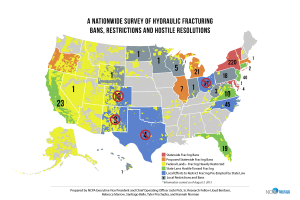New York Primary “Fracking” Fight
Bernie Sanders is demanding a nation-wide ban on hydraulic fracturing or “fracking” while he campaigns in the state of New York against Hillary Clinton, using the anti-fracking position of the state of New York to sway more voters over to his side.
Bernie’s campaign aligning with the anti-fracking effort claims that the drilling process has extremely hazardous effects. However, some very extensive studies prove otherwise.
Last year the Environmental Protection Agency (EPA) conducted an extensive study on the effects of hydraulic fracturing on drinking water. The study:
- Did not find evidence that these mechanisms have led to widespread, systemic impacts on drinking water resources in the United States.
- Of the potential mechanisms identified in this report, there were specific instances where one or more mechanisms led to impacts on drinking water resources, including contamination of drinking water wells.
- The number of identified cases, the study concluded however, was small compared to the number of hydraulically fractured wells.
In addition to the EPA’s findings, the processes of hydraulic fracturing and horizontal drilling created an energy/economic boom in the United States.

